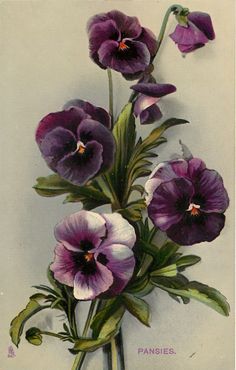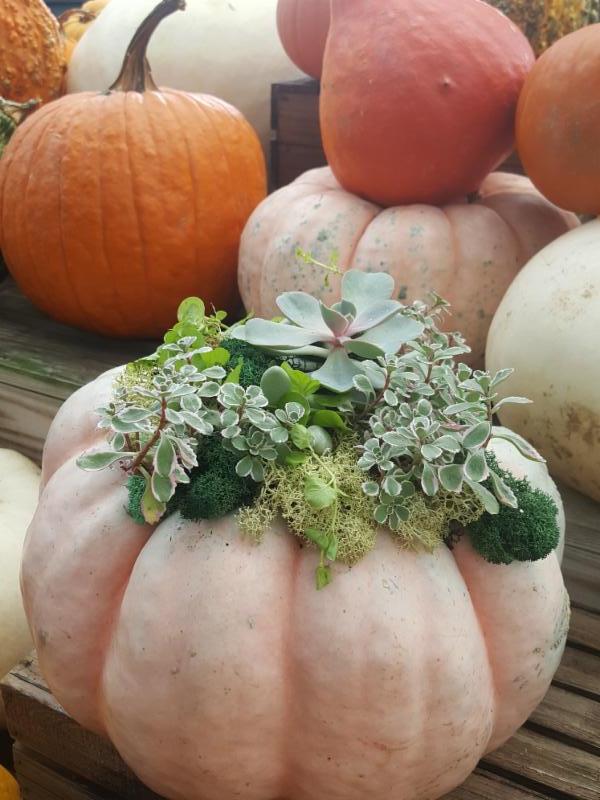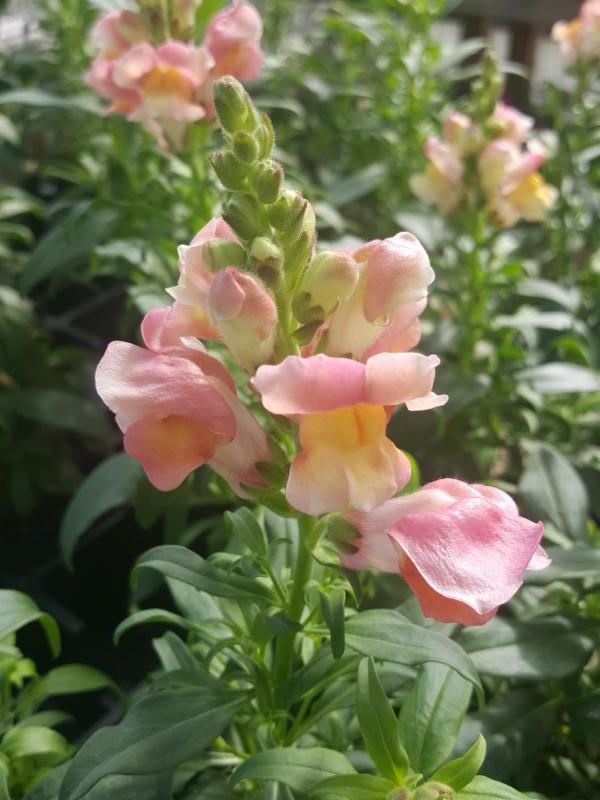|
Collier's
Garden Scoop
|
|
October 2017
|
|
|
|
|
|
|
|
And close at hand, the basket stood with
nuts from brown October's wood.
|
|
|
The weather has finally caught up with the season, and now that the Indian summer is over it is time to begin planting cool season annuals, as well as trees, shrubs, groundcovers and perennials. Fresh shipments of all of these have begun to arrive so there is plenty to choose from for your fall and winter garden. We hope to see you at the nursery this month as we revel in the crisp autumn air.
|
|
October Hours
Monday - Saturday 9 to 5
|
 It's Time to Plant
It's Time to Plant
Pansies & Violas!
Now that temperatures have dropped into the 70s, it's officially time to begin planting these jewels of the cool season garden. While pansies and violas are the only reliable blooms for winter, their incredible variety of colors more than makes up for this. Pansies and violas are available in nearly every color of the rainbow, which gives you plenty of options to get creative! To get started, here are five tips for success with pansies and violas:
1) Plant as soon as possible. Planting pansies and violas while it's still relatively warm allows them several weeks to grow rapidly before daytime temps drop below 50 degrees and their growth rate slows dramatically. Plus, by planting before Thanksgiving you can enjoy choosing from the very best selection of varieties and colors.
2) Fertilize when planting. We recommend using fertilome Start-n-Grow, a slow-release fertilizer that only needs to be applied every 3 to 4 months. This extra dose of nutrients gives your pansies and violas the boost they need to establish strong root systems, grow quickly, produce an abundance of blooms and thrive during cold weather.
3) Provide loose, well-drained soil. Pansies and violas languish and are susceptible to rot and wilt if the soil they are planted in is too heavy and drains poorly. "Wet feet" are more common in the winter since cold air causes moisture to evaporate slowly, and winter rains can be frequent. Make sure your containers have adequate drainage holes and add organic matter and soil conditioner to flowerbeds to break up clay soil before planting.
4) Got shade? Give violas a try. Both pansies and violas thrive in partial to full sun (3 or more hours each day). However, if you have a shadier area that receives only 1 to 3 hours of sun each day, and would like to brighten it up with blooms, then opt for violas. They are more likely to produce flowers with less sun.
5) Pinch off spent blooms. While pansies and violas will bloom whether 'deadheaded' or not, removing faded flowers definitely has a positive effect. Flowers that aren't removed will begin to form seeds, and this diverts energy that the plant could use to produce more flower buds. Pinch off dead blooms occasionally to encourage a fresh flush of color.
|

Everything You Need for
Autumn Arrangements
Pumpkins, mums, crotons and ornamental peppers are in-store and ready to adorn your porch or garden in celebration of fall! Let the cool air inspire you to bring the fiery colors of autumn to your entryways and outdoor spaces. Even the simplest arrangement will have an eye-catching effect: place a mum in a pot or burlap bag on each side of your doorway and then set a pumpkin or two on the ground beside them. It's really that easy!
|

Plant Now for
Spring Blooms
A little extra digging in autumn will reward you with a garden that bursts with flowers next spring. When planted in the fall, dianthus, foxglove, poppies and snapdragons have time to establish strong root systems and get a head start on foliar growth during fall and early winter. This allows them the extra energy needed to produce an abundance of blooms once temperatures begin to warm next March and April.
|
|
|
 |
|
sweet flag, autumn fern
and coral bells
|
 |
Evergreen Accents
Add Texture & Interest
Compliment pansy & viola blooms with colorful foliage and interesting textures that will survive winter. Add wispy blades with sweet flag or sedge, or coarse texture with the deep green fronds of autumn or tassle fern. Coral bells, euphorbia and lysimachia are among the best bets for vibrant foliage. Perhaps the most dramatic foliage accents for the cool season garden are ornamental cabbage and kale- large and showy, wavy and frilly leaves develop bright white, or deep pink, purple or red tones as temperatures drop.
|
|
|
 |
|
Rouxai & Lollo Rossa lettuce
|
 |
Cool Season Crunch
Lettuce & Arugula
Dig into a homegrown salad this autumn! Temperatures are now ideal to grow luscious leaves of lettuce (Lactuca sativa) and arugula (Eruca sativa) in your garden- both thrive when temps are below 80 degrees. Warmer weather triggers bolting, or flower and seed production, and quickly causes leaves to turn bitter and inedible. Since both lettuce and arugula will tolerate temps down to about 25 degrees, there is plenty of time left to enjoy these easy edibles.
Lettuce and arugula leaves are packed with vitamins and nutrients, most notably vitamins A and C. Add arugula to your salad for a punch of bold, spicy flavor to contrast with soft, buttery lettuce leaves.
There are four types of lettuce: crisphead, butterhead, loose-leaf and romaine. Crispheads are the most troublesome and usually avoided by home gardeners. Butterheads, which form a loose head, are much easier. Bibb and Buttercrunch are common butterhead varieties. Loose-leaf types form a rosette instead of a head, are the most heat tolerant, easiest to grow and produce the longest since leaves can be harvested a few at a time. Oakleaf, Simpson, Lollo Rossa and Red Sails are common loose-leaf types, but there are many more. Romaine types produce an erect, cylindrical head and are moderately heat tolerant. Parris Island is a common romaine variety.
Lettuce requires, loose, well-drained soil and, since the leaves are 95% water, they must be watered consistently and are not tolerant of dry soil. Both lettuce and arugula can be grown in containers or in the ground in partial or full sun.
|
 |
|
 |
purple and golden sage
|
5 Herbs for
Fall & Winter
The holidays are right around the corner, and if you especially enjoy cooking during this season you'll be happy to know that several of the most popular herbs for flavoring savory fall and winter dishes can be grown in central Alabama through the winter months. Many also enjoy using them as aromatic accents in cool-season plantings with pansies and violas. The pungent foliage of these herbs are known to deter deer!
Herbs are easily grown in the ground or in containers with minimal care. To ensure success, the most important factors are loose, well-drained soil and plenty of sunshine. Herbs do not tolerate heavy, wet soils or over-watering.
Our favorite evergreen perennial herbs for fall and winter are oregano, parsley, rosemary, sage and thyme. All except parsley are members of the mint (Lamiaceae) family, and all except parsley produce blooms that attract bees, resulting in deliciously flavored honey! Rosemary blooms in late winter and early spring, sage and thyme in late spring and oregano from mid-summer to early fall. The leaves of all five of these hardy herbs can be used fresh or dried.
|
|
|
 |
|
Sunshine ligustrum & mums
|
 |
Fall is for Planting
October and November are the best months to tackle landscaping projects. Planting trees, shrubs, groundcovers and perennials in the fall allows them the opportunity to grow strong root systems over the winter, before the stress of hot, dry summer weather sets in. We have an excellent selection of shrubs and our best variety of trees for the year right now. Perennial availability is not as extensive in the fall as it is in the spring, but we've rounded up as many as we could find, including a few, such as Mexican sage, that aren't around any other time of the year.
|
|
|
|
|
|
|
Golden Fernspray
Hinoki Cypress
|
|
|
|
|
|
|
|
|
|
|
Cheyenne Spirit coneflower
|
|
|
|
|
|
Fresh off the Truck
Fountains in several sizes, including small table-top styles,
birdbaths, statuary and containers have arrived for fall!
|
|
|
|
|
Collier's Nursery
205-822-3133
2904 Old Rocky Ridge Road
Birmingham, AL 35243
|
|
|
|
|
|